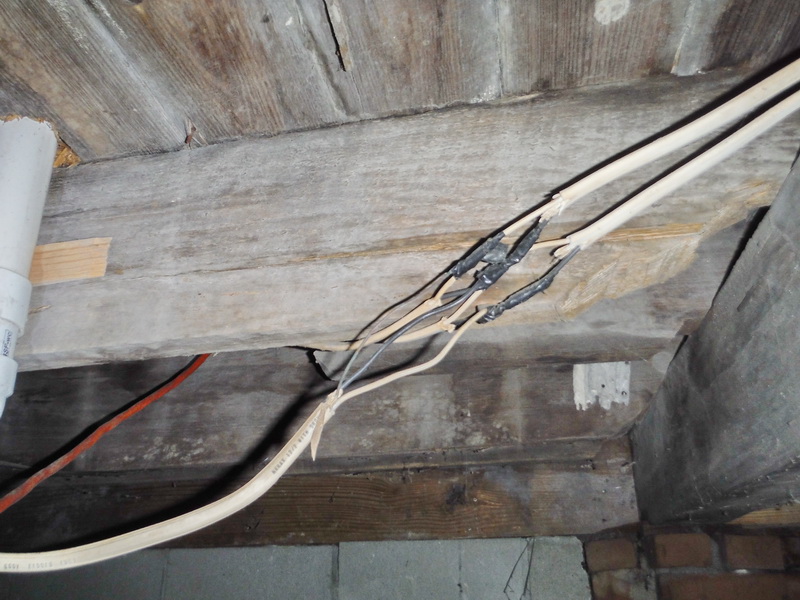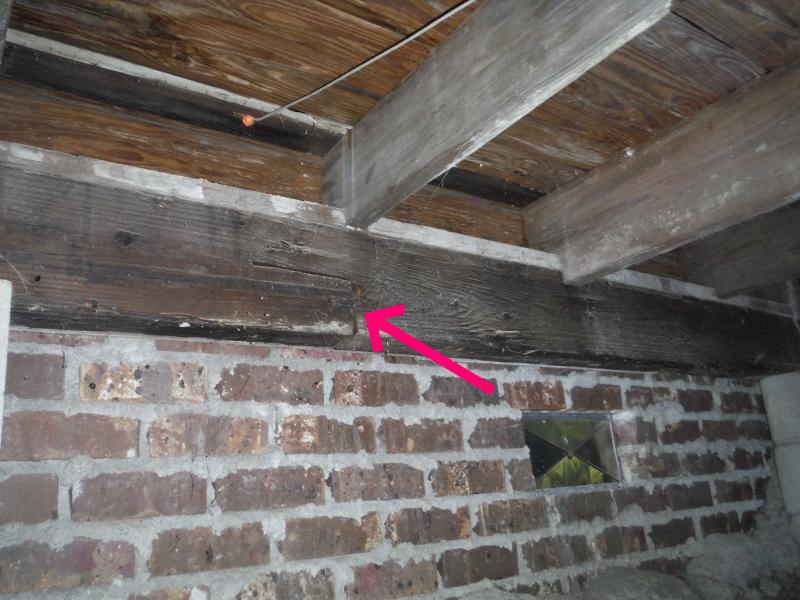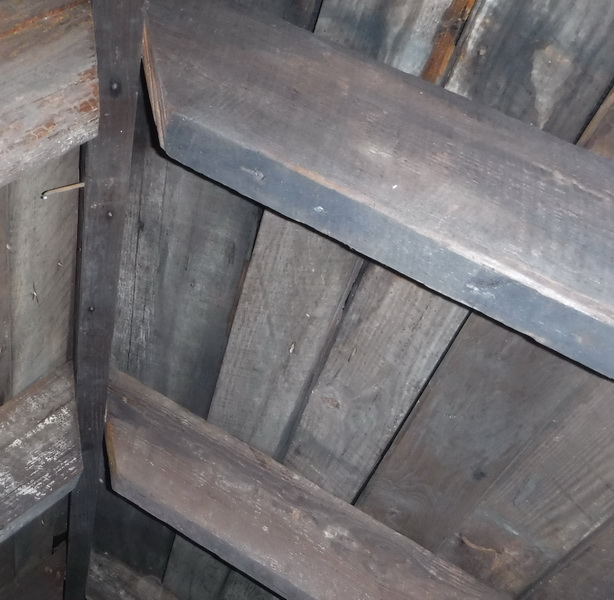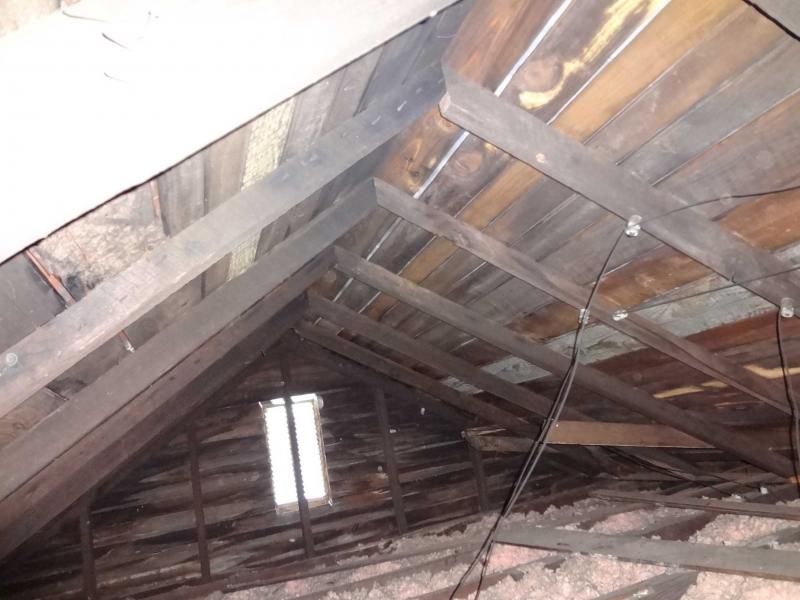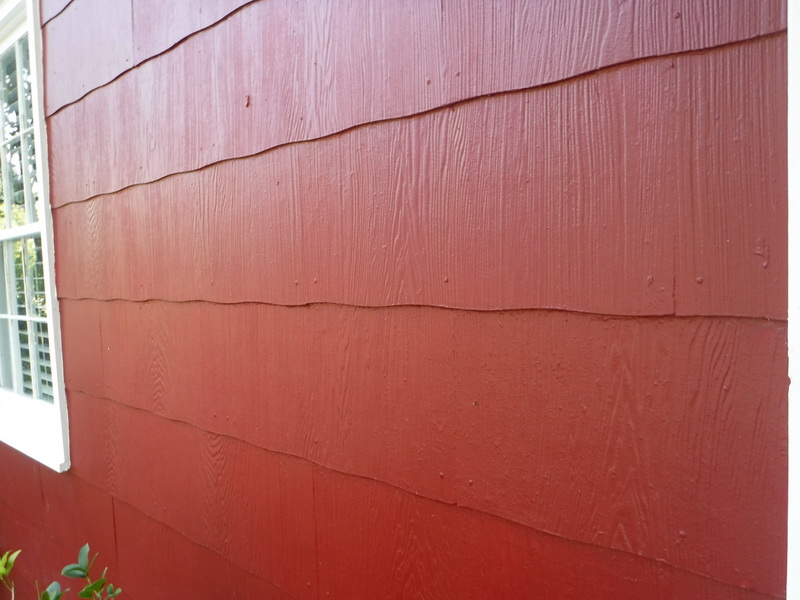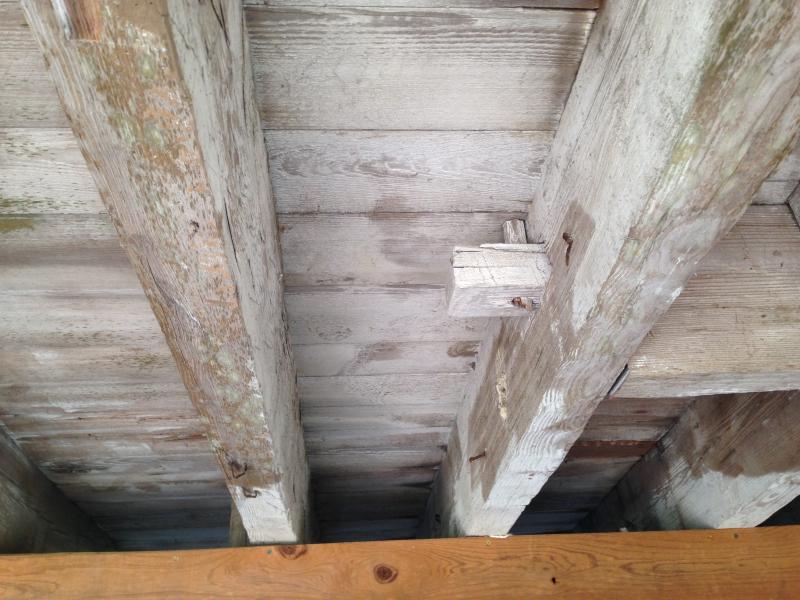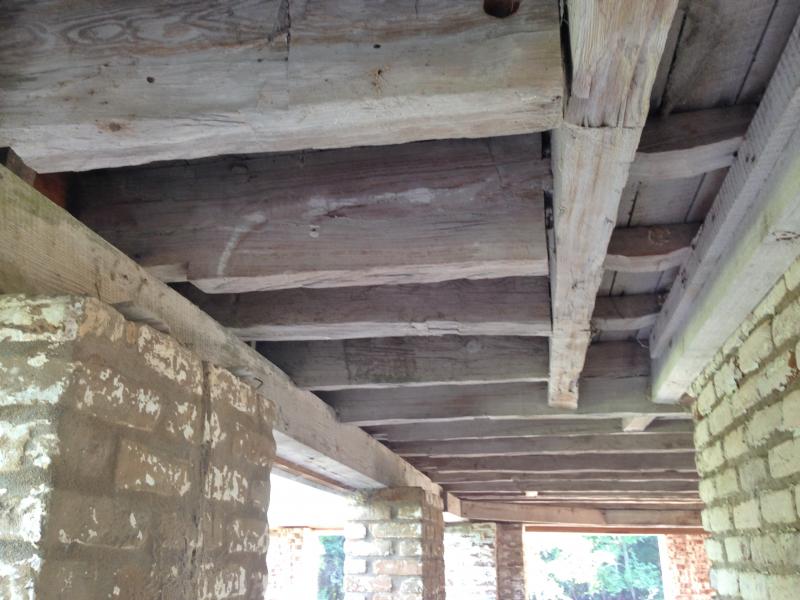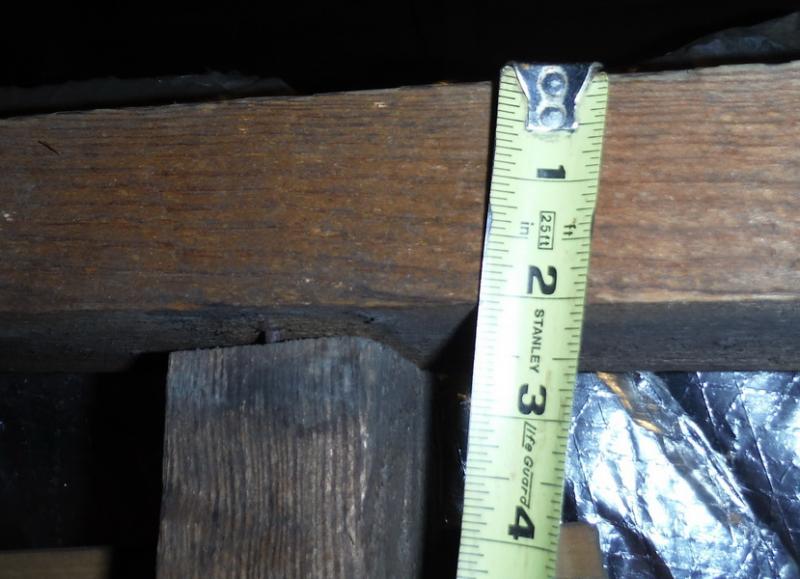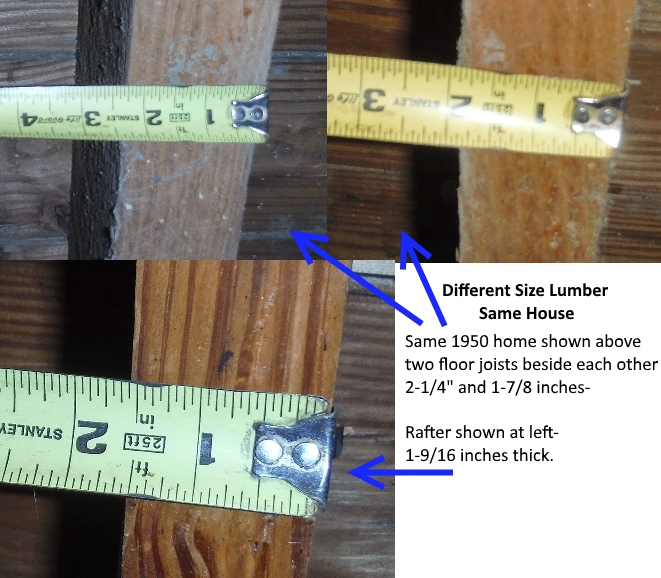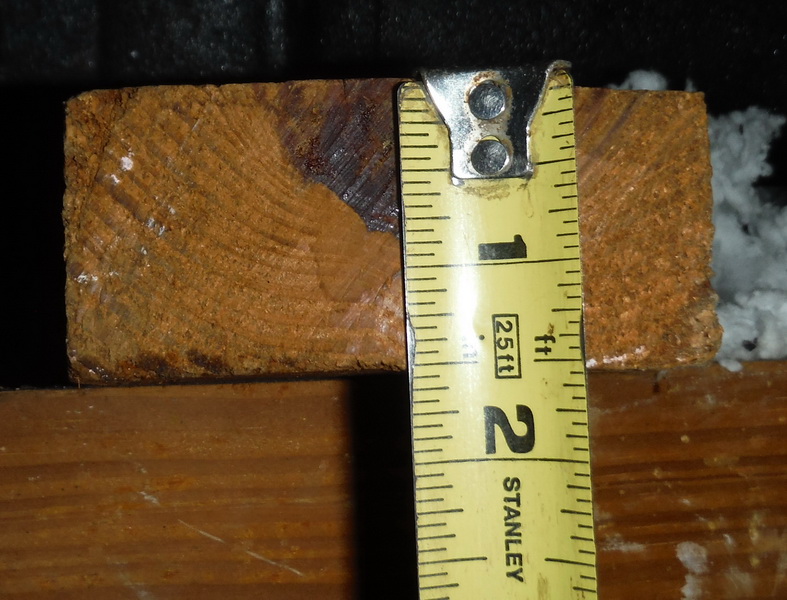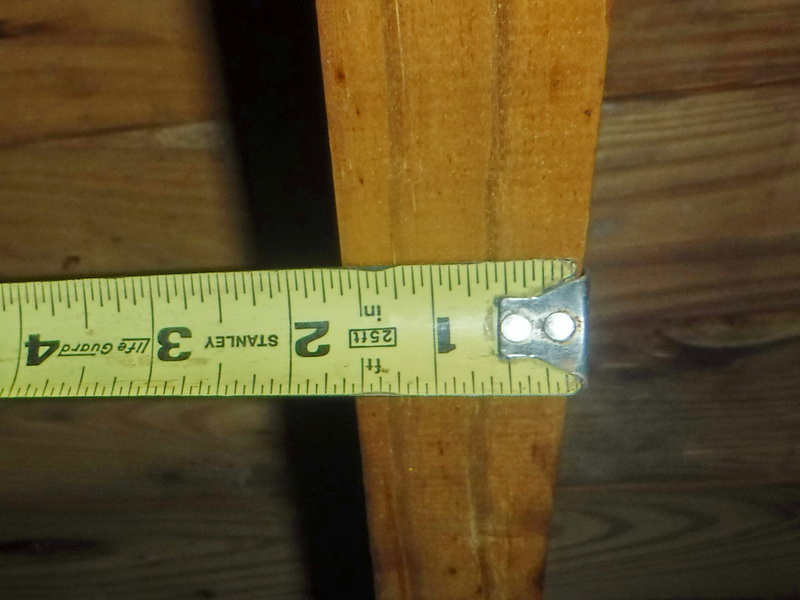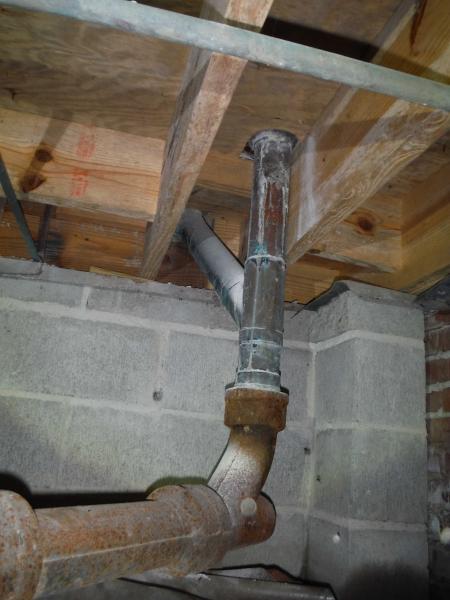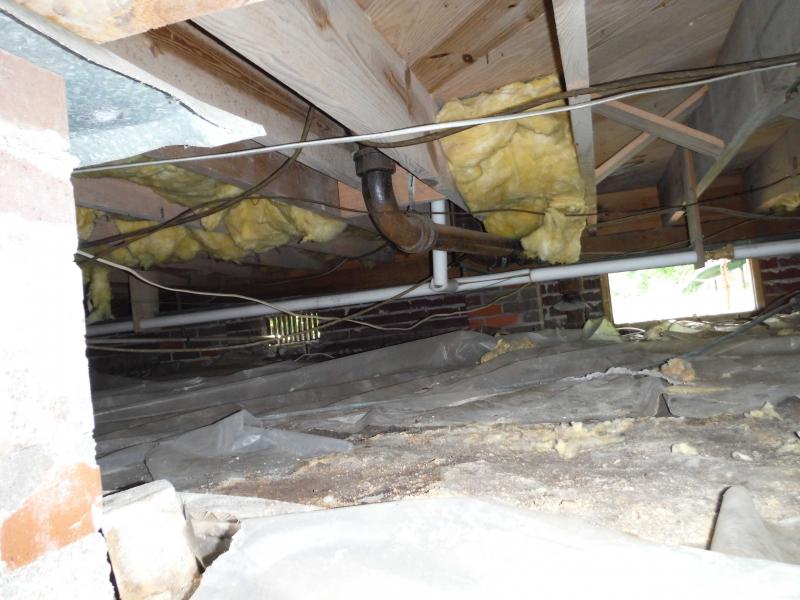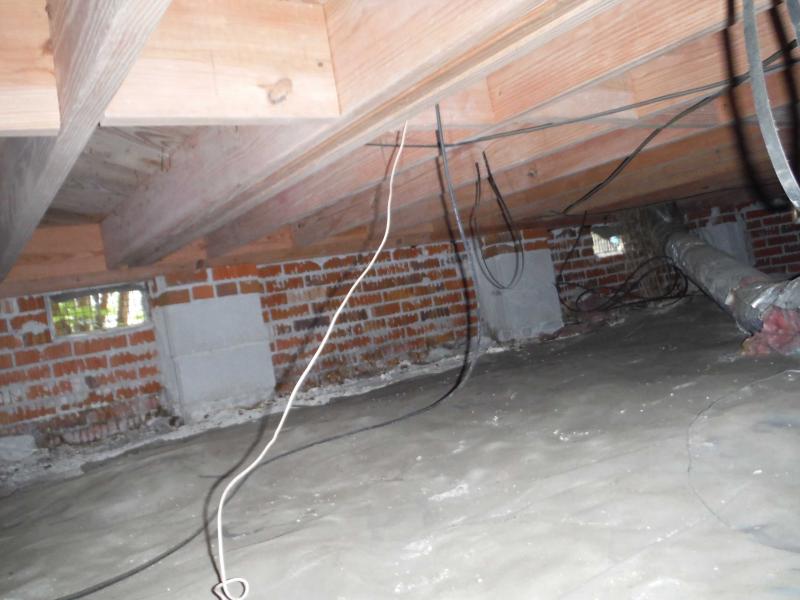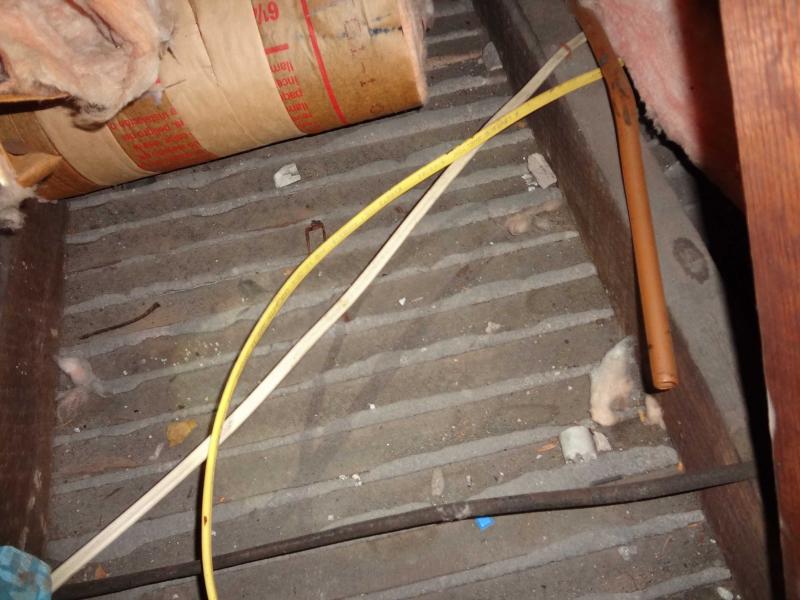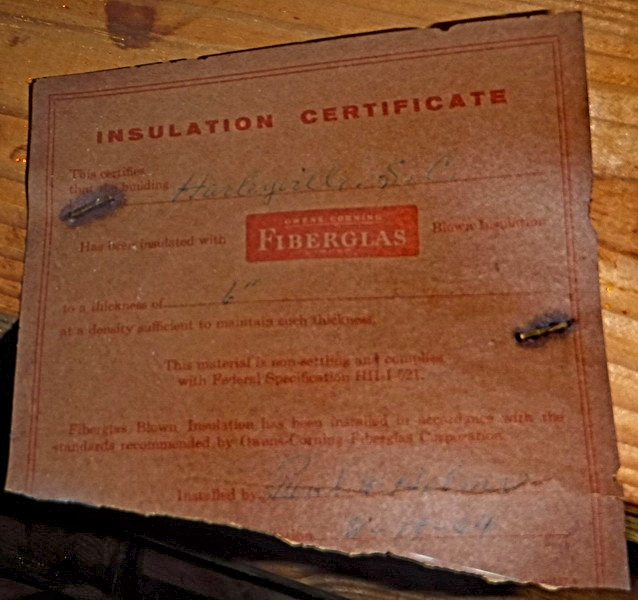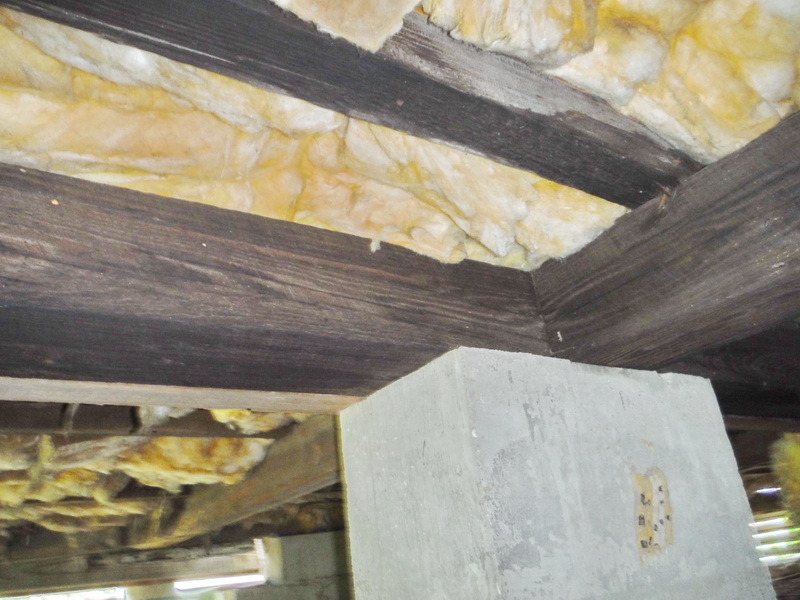How old is my house?
Home buyers and home inspectors are not always given accurate information about how old the home they are about to buy is. Oh sure, a simple web search on popular real estate sites typically turns up the homes advertised age. However, occasionally homes are built before records are kept; been in the same family from before time began or been re-dated due to extensive remodeling or upgrades. Sometimes people just prefer that nobody knows. Whatever the reason, we decided to put this page together with some tips on deciphering this mystery. Remember that none of these observations are hard and fast. Homes can be built in a variety of ways for a variety of reasons. So here are some tips on dating your home.
First Steps to Begin Your Search
It might be on your deed, but if you don’t have that do a internet search of your address. It might show up on a real estate site. But if you want verification of their information try the county tax office.
If that doesn’t work try county tax records. In most places this information is online at the county tax records website. Not all records are online; so you may have to take a trip to the county property records office.
Ask the sellers. They might have inside information. My great aunt once told me her house was so old it was pegged together (no nails).
Manufactured homes sometimes have a data plate (poster) inside a closet or or a kitchen cabinet door with the manufacture date on it.
Some contractors will put the date of installation of their products on the electric panel door (though the sticker could have been applied anytime). On really old homes it is common for the panel to have been replaced so this would not work.
Some appliances like water heaters and air handlers have their manufacture date encoded into their serial numbers. If you are sure the equipment is original to the home then this could work. The website Building Intelligence Center can help you find the manufacture date for many brands of these appliances. Really old appliances may not be in their data base though.
Some fixtures like toilets have serial numbers inside the lid or the tank. I find the actual date is not so apparent because it is mixed in with a lot of other numbers much like the serial number on a car but it’s worth a try. Toilets are likely to have been switched out on a older home so this may not work either.
Construction Details like framing lumber, foundation type, framing technique, wall finish materials, wiring type, piping type can give clues. None of these clues alone will give an exact date but it might narrow it down to a few decades here and there especially if you consider all the other clues. Let’s start with framing lumber and style of framing.
Dating your home from Construction Type and Building Materials
Framing style and lumber types, availability and milling characteristics can vary greatly. City homes may have different characteristics than country homes. Electrical power may have been unavailable in the country making the carpenter have to hand cut each rafter or notch a joist with a hatchet for instance. Lets take a look at a few of the things we think we know.
After 1962– Framing lumber is likely to be 1.5 inches thick. This is because about that time the commerce department set a standard for trading, shipping purposes. Though in some places 1-5/8″ joists persisted through at least 1965. Be aware though that even today some private saw mills will mill out 2 inch thick rough sawn lumber.
Before 1962– Lumber sizes can be bigger than 1.5” thick. I measured a 1959 and a 1960 home at 1-9/16” thick. I think 1-5/8ths was popular for a while but I can’t pinpoint a date it began or ended. See photos below. Lumber thickness in this time era can vary even in the same geographic area.
After 1919 but before 1962– Framing lumber is likely to be 1 and 13/16” or 1 3/4” thick because several lumber associations and manufactures made some recommendations.
Before 1900 two inch thick lumber was the most popular thickness.
Before 1850 lumber could be any size the local lumber yard milled it as the customer desired.
Timber Framing– Mid 1800’s Timber framing started to wane.
Balloon Framing – Expect to see balloon framing from civil war times to sometime in the mid 1930’s. During this time period it is likely to see circular saw marks on the lumber from where the lumber was milled using circular type saws. Balloon frame structures often have the siding attached directly to the studs. Also. Solid 1×6 roof sheathing is often seen. The floor girders of balloon framed structures are often solid 8×8 or greater timbers with wall studs and joists nailed directly to the girders.
Circular Saw Marks– You’re likely to see circular saw marks on the sides of rafters and joists after 1860 due to the type of saws used at saw mills. Modern lumber doesn’t have saw marks on the sides. The circular saw may have arrived on the scene around 1800 but probably took a while before it became common use. The hand held electric circular saw may have made its debut in 1929. Before that hand saws were used. The way in which notches in the wood were made can give a clue as to whether hands saws or hand held circular saws were used thus dating the structure.
Platform Framing– From the mid 1930’s to present day platform framing is the norm. There was a gradual transition.
Plywood- In 1964 Georgia Pacific started the first large plywood mill in the south. Before that most home were sheathed with 1×6 pine boards laid diagonally. Roofs were sheathed in1x6’s. Some builders were still using diagonally placed 1×6’s on floor framing in the 1980’s, (I know I worked for one such builder.)
OSB– OSB type sheathing started replacing plywood in the mid 1980’s. I remember when the transition was made in my neck of the woods. OSB frequently has a date stamp.
Cut Nails– By 1913 90% of all nails manufactured was of the wire nail type. Before that cut nails were used though the transition was gradual. Cut nails are still used today but mostly the hardened type so as to attach wood to concrete.
Wire nails– By 1920 most framers were using wire nails.
Pneumatic Nails– I was still hand driving nails in the mid to late 1980’s but many of my competitors were using pneumatic nail guns and staple guns. Now almost all framing is done using pneumatic nails. I believe the nail gun was invented in 1950 however.
Sheetrock or Drywall– Drywall was invented in 1916 by the US Gypsum Company. It didn’t catch on immediately. It is thought that by the mid 1940’s drywall started surpassing lath plaster walls in residential construction.
Concrete “cinder” blocks started appearing after 1900. I believe they were invented in the 1830’s however but widespread manufacture didn’t happen until around 1900.
“Truss Plate Gangnails” was invented in 1952. This ushered in the age of modern roof and floor trusses made in a factory. Though framers often made their own “job built” trusses using plywood gussets or other material; that practice fell by the wayside for the most part by the early 1980’s. Now almost all trusses are made in a factory using gangnails as the connector plate. The transition was gradual because builders source their trusses from local truss manufacturers typically.
Asbestos Siding– You’re most likely to see asbestos type siding between 1920 and 1965. Though it existed as early as 1905; it was banned by the EPA for decorative purposes in 1978. In 1920 asbestos siding got a boost from fire underwriters to increase its popularity.
Vinyl Siding– Became increasing popular in the early 1980’s; though it existed long before it wasn’t very common. By the mid ’80’s many large builders had made the switch to vinyl siding.
Remember that really old homes are likely to have been remodeled more than several times. So you have to look beyond the remodeled areas to find areas of original construction. Take a look in the attic or crawlspace.
Judging the Age by the electrical type
Though the wiring type that currently exists in the home may not be original; sometimes there are remnants of the original wiring method in various locations like attic and crawlspace areas.
Knob and Tube Wiring was common from 1890-1940 though it might have lingered on for a few more years depending on the location.
Flexible Armored Cable- Was patented in 1898 but was most popular in housing between 1920 and 1940. This type of cable is still used today.
“Rag” wire with no ground- This type of NM cable had two conductors and the outer covering may appear to covered with fabric (cotton or rayon) and was popular between 1930 and 1962 or a bit longer.
NM cable with no ground before 1962– The NEC code change in 1962 mandated that NM cable have grounding conductors. Before the adaption of this code house typically have two prong receptacles in most areas of the home. Certain circuits had grounding prongs before that though. In 1947 the NEC mandated three prong receptacles in the laundry room and in 1956 they were required for outdoor, garage and basement outlets. Adaptation of codes locally typically lag a few years behind.
Smaller Grounding Conductor– Between 1962 and 1968 the NEC allowed a one size smaller grounding conductor in the NM cable. This will be apparent in the electrical panel.
Aluminum Wiring– You might find solid strand aluminum wiring for small appliance branch circuits between 1965 and 1971.
Circuit Breakers– By 1960 circuit breakers had almost completely replaced fuses.
GFI breakers– If the wiring in the home is original the presence of a GFI outlet breaker can date a home. For instance bathrooms required GFI protection after the adaptation of the 1975 NEC, kitchens in 1987. The adaptation of a code locally generally lags a few years. So the absence of kitchen GFI might mean the home was built before the adaptation of the 1987 code. We have more information on this at our GFI by Year page.
Color Coding– After the adaptation of the 2001 NEC you can expect the electrical wiring to be color coded. Black is #8 or #6, Orange is # 10-2, Yellow is # 12-2, White is # 14-2 AWG.
- Color Coding- After 2024 you can now expect three more colors appearing in the market. They are Light Blue for #14-3, Purple for #12-3, and Pink for #10-3 AWG.
Judging the age by the plumbing Type
Many older homes have a mixture of different piping systems in the home…..sometimes they have every kind at once. The presence of any of these types of piping can give a clue as to when the piping was installed.
Cast Iron drain lines- Homes built up to the late 1960’s can have cast iron drain lines originally. You’re most likely find parts of the cast iron piping in vent stacks or emerging from the ground where other piping types have been added.
Galvanized steel water supply piping- Most popular before 1950.
PVC– Became increasingly popular between 1950 and 1960. It is still used today for cold water supply and is the most commonly used drain line material.
Copper supply lines- From 1950- 1985 most popular years. Copper is still very popular today. Copper drain lines can be seen in homes before PVC became popular (I’ve seen a lot of 1960’s homes with copper drain lines). Copper drain lines are not used much today because of the rising cost of copper.
Polybutylene (grey plastic) plumbing supply lines was manufactured from 1978 thru 1994 and was most popular between 1983 and 1993. Occasionally though you’ll see it in a home beyond this time frame. (I saw some polybutylene in a 1998 home once.)
PEX– Today PEX is king and began after polybutylene went by the wayside after 1994.
Now let’s take a look at what we find out in the field.
Ok…just pretend you don’t see that bad electrical connection. In this picture we’re looking at a joist notched out with what appears to be a hatchet like marks. This is a very old house (exact date not known) In the picture we see hatchet marks, circular saw marks on joists, uneven joist spacing, tongue and groove type flooring laid directly on joists, and joists sitting on top of girders. Joists were 2″ thick and cut nails were used. So it could have been built before 1900. The reported age was 1978 (not!). House was ballooned framed. For those who are young or unfamiliar before electricity was widespread carpenters often had to cut everything with a hand saw. So balloon framing meant less cutting and less wear and tear on the carpenters arm. It’s why they used a hatchet to notch those joists.
In this picture of a 1945 (reported) built home we still see the 8 x8 girders. The joists were cut with power saws and there appears to be a band board. Girders were often notched as you see here (red arrow) with no end support under the girder. They may have thought that since the girders were cantilevered it was OK. It really isn’t; but it was common practice and in this case it seems to be working. Joists are starting to be a little narrower. Wire nails were used. No saw mill saw circular marks on the sides of the joists. This home was platform framed.
In this 186o Charleston home you can see the circular mill saw marks and 2″ thick lumber. This home has been remodeled. You can tell the wood was repurposed and a ridge pole was added (though it is too narrow by today’s standard). The modern standard is 2″ wider than the plumb cut at the top of the rafter. The 1x sheathing will be thicker as we go backwards in the time line. Today it is 3/4″.
This home was advertised as built in 1935. Right after the great depression. Maybe that explains the use of undersized rafters (times were tough). Note the widely spaced rafters are only 2 x 4’s and no ridge, no collar ties, no bracing. This is typical of homes of this era. This roof is going to need more bracing. The floor joists of this balloon framed home had circular saw marks while the rafters did not. The ceiling joists were very thick and had circular saw marks. Notice the knob and tube wiring hanging from the rafters. Some of it was still active.
This home was built in 1843 and has 3 inch thick joists which are pegged together with mortise and tenon joints. The spacing of the joists so close together indicate that cost of lumber was not a significant factor in its construction. Go see for yourself. It’s the underside of the Stoney Landing Home at Old Santee Canal state park in Moncks Corner SC.
Another picture of the Stony Landing Home from underneath. Shows how the rough cut joists were notched above the girders on the left to achieve a level floor above. On the right the joists tenons supported them. The header joist had a mortise and tenon with a peg holding it together similar to the picture above. This kind of joinery required no nails.
In this old Charleston home built in 1950 (not verified) we see different size lumber. The floor system was of the dropped girder design but the joists varied in size. I measured 2-1/4″ and 1-7/8″ on joists right beside each other (most were 1-7/8″). Roof rafters were 1-9/16″ and there were still some knobs visible from the old knob and tube wiring type under the rafters. There were signs of both copper and cast iron plumbing drain lines. So could this homes original floor structure be older than 1950? Maybe.
By 1960 lumber sizes had shrunk almost to what we have now (1-1/2″). This 1960 built Charleston area home had 2×4 lumber which was 1-9/16″. After 1962 you can expect lumber to approach 1.5″ thick (usually). I know I measured at least one ’65 home with 1-11/16″ thick joists. So you never know what you’ll see in the ’60’s.
On this home built in 1964 (verified) the lumber was clearly 1-5/8 inch thick. Evenly spaced 16″ on center platform framed in both the crawlspace and attic. Copper, galvanized steel supply lines. Galvanized steel and Cast Iron drain lines were observed. I’ve recorded 1-5/8 joists on homes built in 1965 too.
You might find aluminum wiring in homes built between 1965 and 1971. This home was built in 1971. Solid strand aluminum wiring is a concern because connections can come loose and be a fire hazard (and many other reasons); so this type of wiring was discontinued.
A home built in 1960 can have copper supply lines; with copper and cast iron drain lines originally as shown in the picture above. Cross bridging and metal termite shields were common. This home had a little remodeling done to it so there was a mix of plumping types in this home.
Here is a home reportedly built in 1956. Evenly spaced joists with cross bridging, 1×6 diagonal subfloor, cast iron drain lines and copper supply lines, brick piers and termite shields on top of piers. Also note the dropped sill (probably an 8×8) with the joists above it. This house is platform framed.
In this home reportedly built in 1968 the sill is no longer dropped (why waste the wood) and solid blocking was becoming more common. Though I remember doing cross bracing in the early ’80’s too. This home had cast iron drain lines, 1×6 diagonally laid subfloor, plywood sheathing on roof. No termite shields. I thought the brick caps on top of the block piers were interesting. Also note that insulating the floor had not really caught on yet. Central air conditioning wouldn’t catch on for a few more years but it would present another problem that many would be unaware of. Condensation on the subfloor would necessitate the need for insulating the floor.
Here is the back side of a lath ceiling type as viewed from the attic. The reported age of this home was 1900. Some say lath died out in the late 1950’s completely. This home was balloon framed, had remnants of knob and tube wiring. Like all older homes it was remodeled quite a few times. In the picture we se yellow NM electrical cable so at least this portion was wired after the adaptation of the 2001 NEC.
Sometimes you get lucky….on this home the insulation certificate in the attic is 8-16-64. The owner verified that the home was insulated when it was constructed….in this case 6″ of insulation was installed. Insulation certificates are a good method of verifying age as typically homes are insulated when they are built and the certificates always have a date on them. Of course real old homes won’t be insulated. On newer homes or homes that have been remodeled, the OSB roof sheathing will often have a stamp on it with the date.
Lumber size alone cannot be the determining factor in dating your house. This Charleston home’s advertised age was 1955. It had been remodeled extensively but the original section of the home had these 3″ joists evenly spaced with T&G strip flooring above. Girders were lap joined above the piers and circular saw marks could be seen on the girders. It was likely platform framed. So what do you think? Is 1955 a reasonable age for this floor system?
Well that’s it for old crawlspace home inspection photos. I hope you found this article useful. If so leave a comment below.

